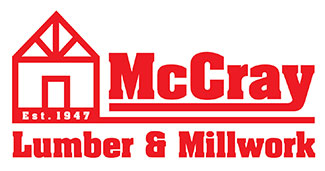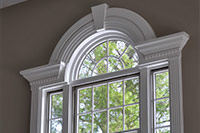Decorative moulding is a great way to enhance the beauty and design of your home’s interior, while also increasing the value of your home. Adding decorative moulding can give your home an upscale, luxurious feel.
One of the most commonly used types of decorative moulding is crown moulding. Crown moulding is typically installed at the top of the wall where the wall and ceiling meet. Crown moulding is available in a wide range of sizes and styles, ranging in widths from 1 ½ inches to 20 inches. The typical size used in most homes is about 4 to 5 inches in width. Crown moulding can also be used for capping pilasters and cabinets, and in the creation of cornice assemblies, door hoods, and window hoods.
When selecting crown moulding, take into consideration the style of the home and the décor of the room. Some styles of crown moulding lend themselves better to certain styles of homes. For example, ornate crown moulding might look out of place in a contemporary-style home, while very detailed crown moulding works great in a period-style home. Similarly, in a room with traditional furnishings, a more ornate-style crown moulding is appropriate, while a room that is decorated in a modern style would be better suited for a simple, clean moulding profile.
You’ll also want to take the ceiling height of the room into consideration. Many people mistakenly believe that crown moulding cannot be used in a room with low ceilings. Not only is this not true, but crown moulding can actually be used effectively to create the illusion that the ceiling is taller than it actually is. For ceilings 10 feet or higher, the rule of thumb is to allow 1 inch of moulding width for each foot of ceiling height. For lower ceilings, you’ll want to select a narrower moulding as an 8-inch moulding in a room with an 8-foot ceiling would be overpowering. You can test out the moulding size you are considering by cutting paper or cardboard and taping it up to see how it looks. You can even combine two styles of narrow moulding together to create the look of one wide crown moulding.
Other types of common decorative moulding include:
- Baseboard Moulding – Also called skirting board or base moulding, baseboard moulding is installed at the bottom of the wall to cover the joint between the floor and the wall. Most homes use baseboards anywhere from 2 inches to 6 inches deep.
- Casing – Casing is an ornate trim used around a window or door. The average size for casing is between 1 and 4 inches.
- Chair Rail Moulding – Chair rail moulding is installed horizontally around the perimeter of a room, usually about 30 inches from the floor. The purpose of a chair rail is to protect the walls from chairs bumping it, but it is often used solely for decorative purposes.
You don’t have to use the same moulding throughout your home. You can choose different styles of moulding to suit the décor and style of each room. When choosing moulding, select high-quality moulding. While it may cost more, cheaper moulding will not give you the same impressive results. Buy more moulding than you think you need to allow for joints and miter corner cuts.
While white is the most commonly used color for moulding, you do not have to use white. Your moulding should be the same color as the mouldings already in your home. You should prime, stain, or paint your moulding before you install it. This will make the finishing process much faster and easier. After installation, you will just need to do some minor touch-up work. Be sure to finish the underside as well to prevent warping.


